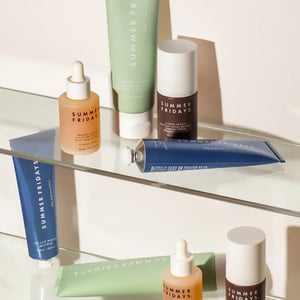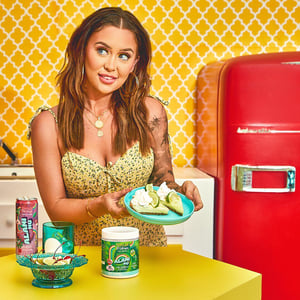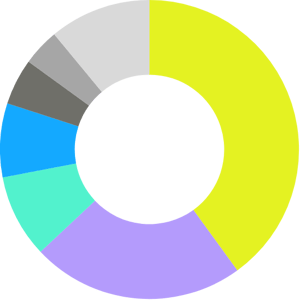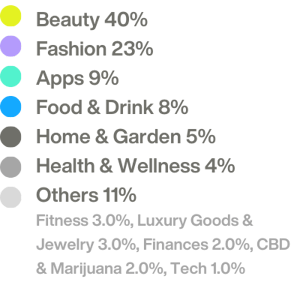In the crowded, fast-paced world of consumer goods, a new force is reshaping the market—creators. No longer just influencers on Instagram or content makers on Youtube, these digital media powerhouses are transforming how brands are built, marketed, and sold.
Forget the old playbook of influencer marketing; creator-led brands are skyrocketing past traditional CPG giants, capturing hearts, minds, and wallets with a speed and authenticity that legacy brands can only dream of. As the lines between content creation and brand building blur, legacy brands need to pay close attention to this shift and adapt their product and business strategies accordingly to stay competitive in this new environment.
More Creator Brands on the Horizon
Why Legacy Brands Can't Ignore This Trend
Discover five critical reasons established brands need to embrace the creator revolution.
The Future of CPG
A Collaborative Approach: Learn how traditional brands can thrive by strategically partnering with creators in this new era.
01/04
The Rise of Creator-Led Brands
Creator-led brands are not just gaining traction—they are disrupting nearly every category, from fashion and beauty to candy, coffee and cereal. They are witnessing exponential growth with limited ad spend, often far outpacing their categories while driving unprecedented engagement and loyalty through their deeply connected communities that rally behind their brands.
A few examples of successful creator led brands:
- Faster growth: Creator brands grow twice as fast on social media than non-creator brands. They’re also growing faster in revenue. In a recent study of the beauty category, sales growth of celebrity & creator beauty brands far surpassed growth of the total beauty category, up +57.8% while total Beauty is up 11.1% (Nielsen IQ).
- Higher Engagement: Creator content achieves 12x higher engagement rates and 14x higher effectiveness rates compared to brand-generated content, with twice as many likes and comments (according to a study from Dash Hudson & Nielsen IQ).
- Stronger consumer trust and influence: 49% of all consumers make daily, weekly, or monthly purchases because of influencer posts, meanwhile 87% of Gen Z consumers are more willing to buy from brands that partner with influencers outside of just social media content.
When creators leverage these strengths to launch brands, the results are incredibly impressive.
- Unprecedented first year sales: Logan Paul & KSI’s Prime sold $250M in year 1, whereas it took incumbent competitor Celsius 8 years to achieve that level of success. Up and coming brands like Best cereal by the Sidemen, and All Things Butter from Thomas Straker entered the market with a bang, selling over 1M boxes and 100K blocks of butter respectively in their first few months with limited retail distribution.
- No ad spend: It is estimated that Mr. Beast grew Feastibles to $100M with no paid advertising beyond a simple branded keyword ad targeting “feastables.” Because creators have highly engaged, built in audiences, they don’t have to buy audiences and reach like a traditional brand.
- Expedited paths to $1B and exits: Selena Gomez’s Rare Beauty reached $60M in its first year, and a $2B valuation in just 3 years. She is looking to exit this year which will be the fastest path from launch to multibillion dollar exit ever by a beauty brand. Meanwhile, Rihanna’s Fenty Beauty sold $72M in its first month and is now the top earning celebrity beauty brand in the world.

While audience size certainly helps, we are seeing successful examples from creators with smaller or more niche but highly engaged communities.

Marianna Hewitt and Lauren Gores

Katy Hearn
Not every creator-led brand is destined for massive success; the industry has certainly seen its share of failures. These often stem from a disconnect between the creator and the product, or from inadequate financial, business, and operations planning. However, when a brand gets these fundamentals right, the potential for success is truly remarkable.
02/04
More Creator Brands are on the Way
We’re still in the early days. Creators are looking to diversify beyond brand sponsorships, with nearly 50% of Gen Z and Millennial creators aspiring to be business owners. This means more creator-led brands are on the horizon. Beauty and Fashion have become quite saturated and run the risk of creator fatigue setting it, but there are many categories ripe for creator led disruption.


03/04
Why Legacy Brands Should Care
- Innovation Paralysis: Big CPG brands have long struggled to foster new growth internally, often opting to acquire emerging brands at inflated prices. Creators, on the other hand, excel at spotting big market opportunities and translating them into successful brands quickly. By bringing creators into the innovation process, CPG companies can inject fresh energy into their portfolios and use creators as catalysts for innovation and growth, tapping into new markets and consumer segments that they might otherwise overlook.
- Keeping up with the speed of culture: Getting in touch with culture is hard. Creating culture is even harder. Creators are driving the cultural conversation and offer a direct pathway to understanding what moves our society forward. What creators say, feel, and do have a direct impact on what people are talking about, doing, and buying.
- Direct Access to Highly Engaged Audiences: Creators offer direct access to highly engaged, often younger, hard to reach audiences. These audiences are not just passive consumers; they are active participants in the brand narrative, contributing to its growth through word-of-mouth, social sharing, and even product feedback. For legacy brands, partnering with creators means tapping into this vibrant community and leveraging its potential for growth.
- Authenticity: In an era where consumers are increasingly skeptical of traditional advertising, the authenticity and trust that creators command are invaluable. A study by Edelman found that 63% of consumers trust influencers’ opinions of products more than traditional advertisements. This trust translates into higher conversion rates and stronger brand loyalty.
- Community Building: Creators excel at community building, an area where many traditional brands struggle. By fostering a sense of belonging and community around their brands, creators drive deeper engagement and loyalty. Legacy brands that collaborate with creators can benefit from this expertise, creating more meaningful connections with their consumers.

04/04
The Future of CPG: A Collaborative Approach
The future of CPG lies in innovation that moves at the speed of culture, and creators hold the key. By bringing creators into the innovation process early, legacy brands can unlock tremendous upside, tap into new markets, and build deeper connections with consumers.
By acknowledging the impact of creators and integrating them into their growth strategies, CPG brands can harness the full potential of this dynamic and rapidly evolving landscape. The data is clear: creators are not just a trend—they are the future of brand growth.
Ready to learn more about creator led brands? Become an Innovation Insider


